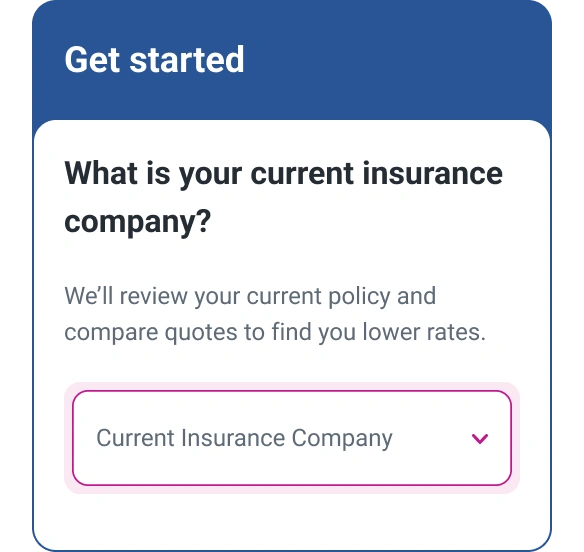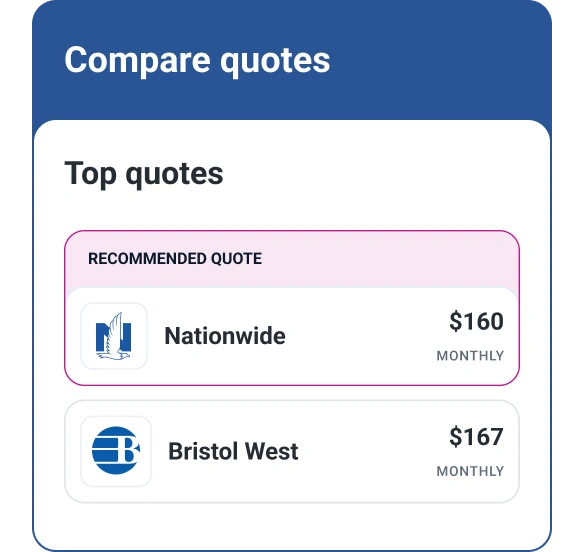What Is Pay-Per-Mile Car Insurance?
Quick Answer
Pay-per-mile auto insurance is an auto insurance plan where your monthly payment fluctuates based on how much you drive. Depending on your situation, you could save money with this option.

Who wants to pay full price for something they don't use? When it comes to auto insurance, your monthly payment stays the same even when you're not driving your car. The exception is pay-per-mile car insurance, which adjusts your monthly payment depending on how much you drive, saving you money when you're not driving as often.
If you don't drive much, or think you'll be using your car less in the future, switching to a pay-per-mile auto insurance plan could save you some money. Read on to learn how these plans work and how much you could save.
How Does Pay-Per-Mile Insurance Work?
With a typical auto insurance policy, you'll pay a premium in exchange for coverage in case your car is damaged or stolen. You may either pay the premium in monthly installments, twice a year or in one lump sum annually. Either way, your rate doesn't change from month to month during your policy period—no matter how often you drive the car.
Pay-per-mile insurance, on the other hand, provides the same level of coverage as conventional auto insurance, but it adjusts your monthly payment based on how much you actually drive.
The payment is broken down into two parts: your base rate and a per-mile assessment, which are determined when you sign up for your plan.
Base Rate
Depending on your policy, your base rate will be charged once a month, or once for each day you use your vehicle. Your base rate is calculated like a normal insurance rate, and takes into account your age, driving history and other relevant information. This fee should make up the bulk of your monthly payment, as long as you're not driving too many miles.
Per-Mile Rate
In addition to your base rate, you will be charged for each mile you drive, paying the total each month. This per-mile rate can vary, but is typically only a few cents. It works like this: Let's say you drive 200 miles per month. If your per-mile rate is 6 cents, that means in addition to your base rate, you'll pay $12 (200 x $0.06 = $12) for the miles you drove in that month.
Once you sign up for the pay-per-mile policy, your insurance company will need to check your mileage each month. The company may install a device in your car, connect to the car wirelessly (if you have a car that's capable of this) or have you send a picture of your odometer. Then, the company calculates your monthly payment based on the mileage count it retrieves.
What Insurance Companies Offer Pay-Per-Mile Insurance?
If you're considering pay-per-mile insurance, find out which, if any, providers offer it in your state. Insurance companies must seek approval from state departments of insurance before providing these policies.
Though not all companies offer pay-per-mile policies, here are several of the main providers that do and the states where coverage is available:
- Allstate Milewise: Arizona, Delaware, Idaho, Illinois, Indiana, Maryland, Minnesota, Missouri, Ohio, Oklahoma, Oregon, Pennsylvania, South Carolina, Virginia, Washington, Wisconsin and West Virginia
- Metromile (Lemonade): Arizona, California, Illinois, New Jersey, Oregon, Pennsylvania, Washington and Virginia
- Nationwide SmartMiles: Alabama, Arizona, Arkansas, California, Colorado, Connecticut, Delaware, District of Columbia, Florida, Georgia, Idaho, Illinois, Indiana, Iowa, Kansas, Kentucky, Maine, Maryland, Massachusetts, Michigan, Minnesota, Mississippi, Missouri, Montana, Nebraska, Nevada, New Hampshire, New Jersey, New Mexico, North Dakota, Ohio, Oklahoma, Oregon, Pennsylvania, Rhode Island, South Carolina, South Dakota, Tennessee, Texas, Utah, Vermont, Virginia, Washington, West Virginia, Wisconsin and Wyoming
- Mile Auto: Arizona, California, Florida, Georgia, Illinois, Ohio, Oregon, Pennsylvania, Tennessee, Texas and Wisconsin
If pay-per-mile policies are offered in your state, there are generally no limitations to who can have one. Remember that the base rate and per-mile rate you'll be charged can be determined by your age, driving history and other relevant factors. So that means if you would typically be charged a high premium for traditional insurance, your pay-per-mile rates will probably also be higher than a driver with lower rates.
Can Pay-Per-Mile Insurance Save You Money?
The cost of pay-per-mile car insurance varies with every company and the number of miles you drive every month. And like most car insurance policies, your premium is also based on characteristics like your driving record, the coverages you choose, your age and gender.
The best way to find out whether a pay-per-mile policy can save you money is by getting a quote for your base rate and per-mile rate, estimating your mileage and plugging it into a formula.
For instance, let's say one company charges you a base rate of $29 per month plus 7 cents for every mile you drive, and you typically drive 200 miles a month. You can use this formula to estimate your monthly premium:
- $29 + ($0.07 x 200) = ($29 + $14) = $43
Then, you'll compare the pay-per-mile quote to what you're paying now. If the cost for per-mile insurance costs less than your traditional insurance premium but has the same level of coverage, then you'll save money with the per-mile insurance.
Is Pay-Per-Mile Insurance a Good Idea?
The main benefit of pay-per-mile car insurance is the potential for saving money. If you drive a lot for work or other regular commutes, you might not come out ahead.
On the other hand, pay-per-mile car insurance can make financial sense if you rarely drive. Low-mileage drivers often include retirees, remote workers, students who live near campus and people who live near work.
The Bottom Line
Pay-per-mile car insurance may help you save money on your premium if you don't drive often. To see if it's right for you, estimate how much you drive each month and find an insurer that offers this type of coverage in your state. Get a quote and compare the pay-per-mile premium to what you're paying now.
Car insurance rates are based on several factors—and in some states, auto insurers can use a credit-based insurance score to determine what you pay. It's a good idea to regularly check your credit reports and look for factors that could be impacting your credit scores. You can also take steps to improve your credit score to help you snag a better rate on your car insurance.
If you're not already keeping an eye on your credit, consider getting free credit monitoring from Experian to see what insurers will consider when evaluating your application.
Don’t overpay for auto insurance
If you’re looking for ways to cut back on monthly costs, it could be a good idea to see if you can save on your auto insurance.
Find savingsAbout the author
Kim Porter began her career as a writer and an editor focusing on personal finance in 2010 and has since been published everywhere from Yahoo! Finance to U.S. News & World Report, Credit Karma, USA Today, Fortune and more.
Read more from Kim

